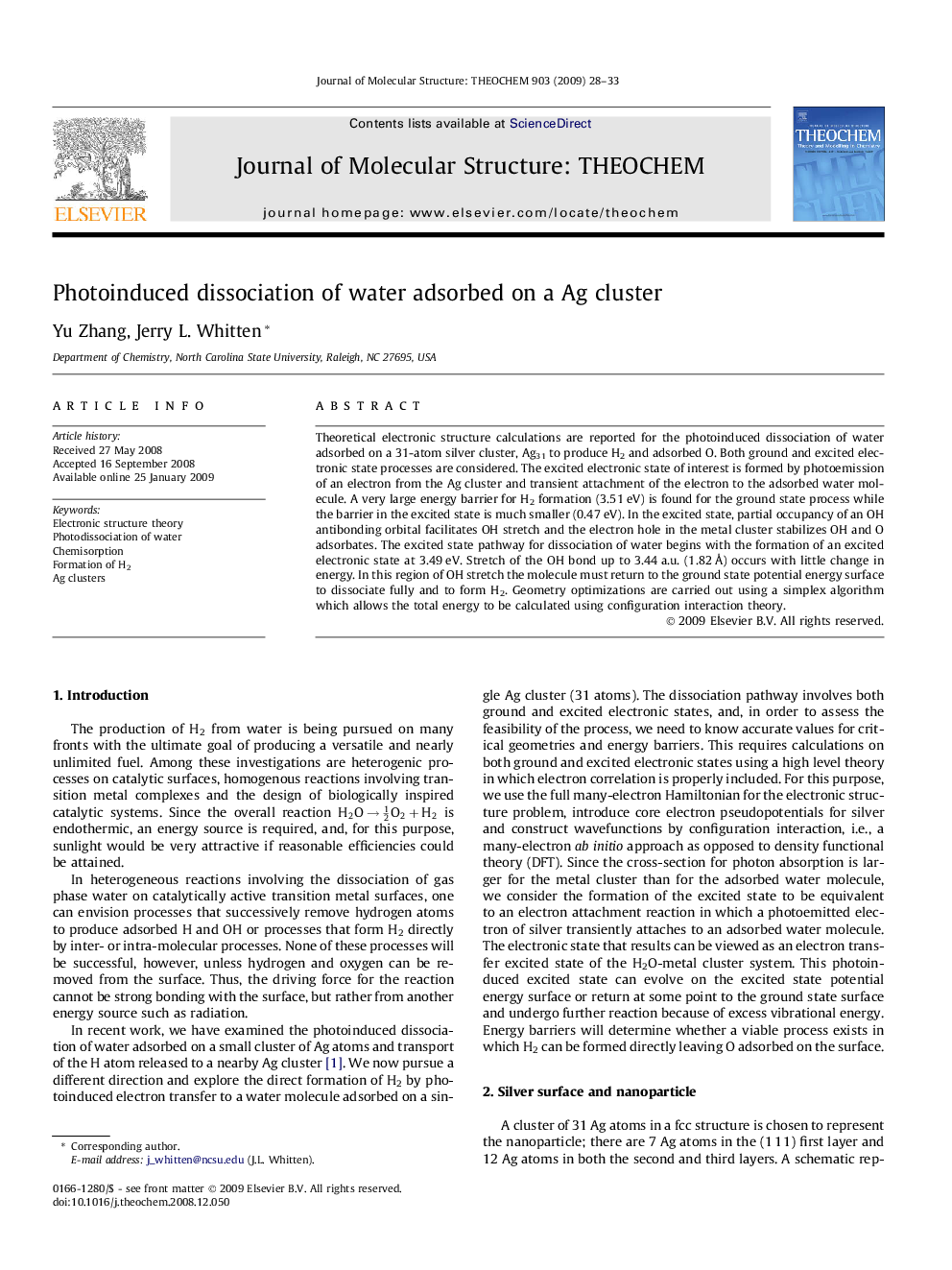| Article ID | Journal | Published Year | Pages | File Type |
|---|---|---|---|---|
| 5416756 | Journal of Molecular Structure: THEOCHEM | 2009 | 6 Pages |
Abstract
Theoretical electronic structure calculations are reported for the photoinduced dissociation of water adsorbed on a 31-atom silver cluster, Ag31 to produce H2 and adsorbed O. Both ground and excited electronic state processes are considered. The excited electronic state of interest is formed by photoemission of an electron from the Ag cluster and transient attachment of the electron to the adsorbed water molecule. A very large energy barrier for H2 formation (3.51Â eV) is found for the ground state process while the barrier in the excited state is much smaller (0.47Â eV). In the excited state, partial occupancy of an OH antibonding orbital facilitates OH stretch and the electron hole in the metal cluster stabilizes OH and O adsorbates. The excited state pathway for dissociation of water begins with the formation of an excited electronic state at 3.49Â eV. Stretch of the OH bond up to 3.44Â a.u. (1.82Â Ã
) occurs with little change in energy. In this region of OH stretch the molecule must return to the ground state potential energy surface to dissociate fully and to form H2. Geometry optimizations are carried out using a simplex algorithm which allows the total energy to be calculated using configuration interaction theory.
Related Topics
Physical Sciences and Engineering
Chemistry
Physical and Theoretical Chemistry
Authors
Yu Zhang, Jerry L. Whitten,
